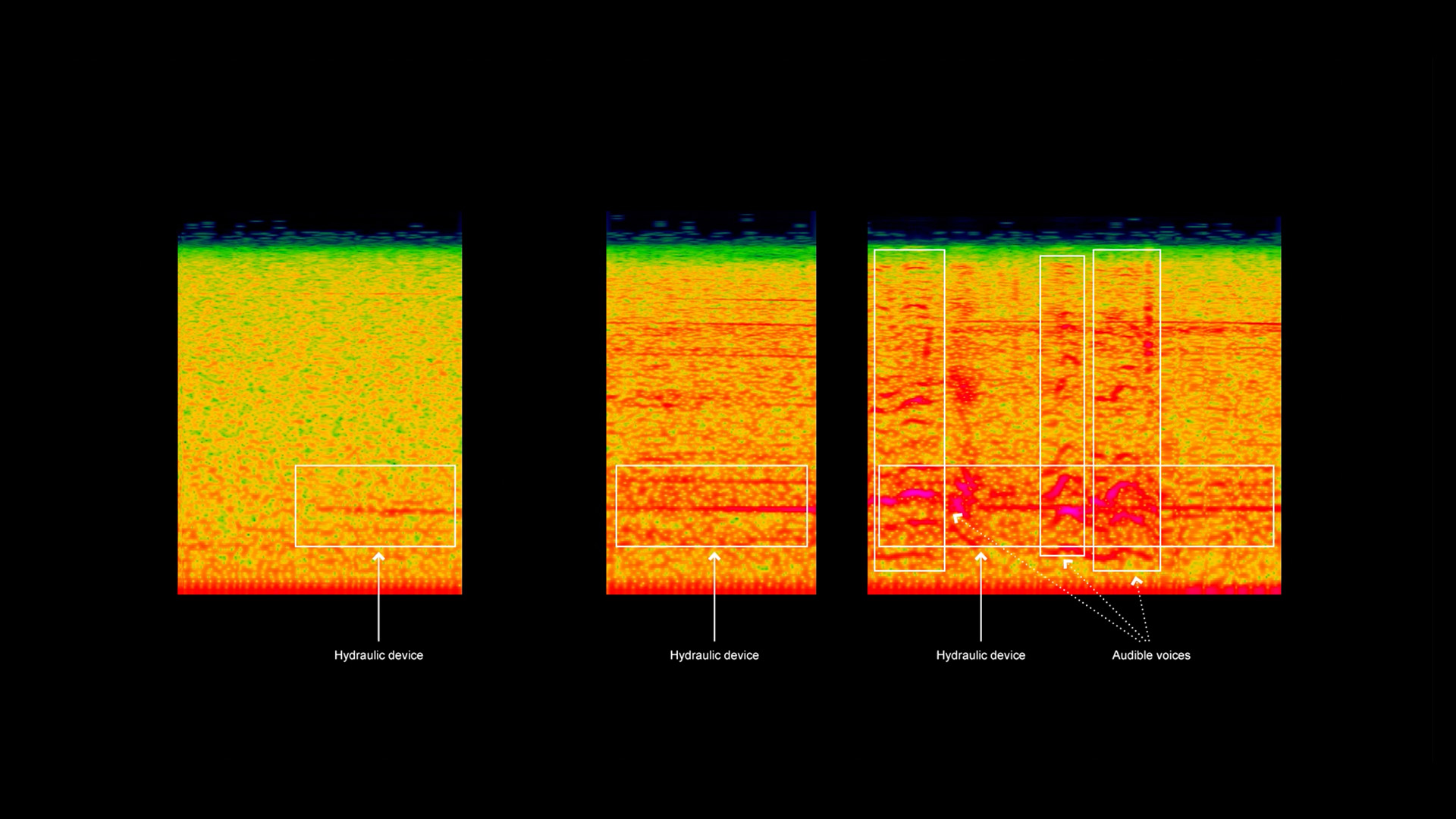Sonic Profiling
Our processes of sonic profiling have been successful in identifying and isolating unseen sources of sound in recordings. These identified sounds help investigators reconstruct the events under scrutiny. Examples of sounds we have been able to effectively identify include the wheels of a car losing traction, the sound of a record-head breaking contact with a magnetic tape, a hydraulic door breacher, the sound of a rubber bullet, the engine of an F-16 fighter jet, a Popeye missile, or an IAI Eitan unmanned aerial vehicle.
We achieve this by isolating specific areas of the frequency spectrum, applying algorithms to reduce reverberation, and making comparative analyses across multiple recorded sources where these sounds are audible. In some cases, physical reconstruction and recording of these sounds are necessary for comparative analysis.
Case study: Did the authorities announce themselves before entering?
Sonic profiling of a hydraulic door breacher

In a suspected case of excessive police force resulting in a civilian fatality, the incident was captured solely by the audio from a nearby CCTV camera. The victim tragically lost his life when law enforcement forcibly entered his home, asserting that he had reacted aggressively. Eyewitnesses contradicted this, suggesting that the victim was unaware that it was the police breaking in.
Earshot's analysis of the provided audio recording uncovered significant findings. Through our profiling techniques we isolated and identified a distinct sound, that of a hydraulic door breacher, buried within the recording. This motorised noise occupied a thin and sustained frequency band, akin to that of a drill. Notably, there were no audible human voices leading up to or during the use of the hydraulic door breacher. This led us to investigate whether the authorities had failed to adequately announce themselves before forcing entry into the property.
Our investigation intially involved quantifying the breacher’s volume in comparison to the volume of a spoken human voice. Then, in another segment of the same CCTV video, we observed and heard the same police officers using the machine to force entry into the victim's parked car on the street outside the home. While using the breacher, two distinct sounds were audible: the officers’ spoken, non-shouted, conversation overlaid on the same sound as the hydraulic door breacher. Human voices were louder and occupied much more of the spectrum of frequency than the door breacher. As the breacher was audibly captured on this recording before the house door was forced open, if human voices, which are louder and have a wider frequency range, had been present, they would certainly have been recorded by the CCTV microphone. Our findings strongly indicate that the police did not announce themselves audibly before forcing their way into the property and killing the victim.